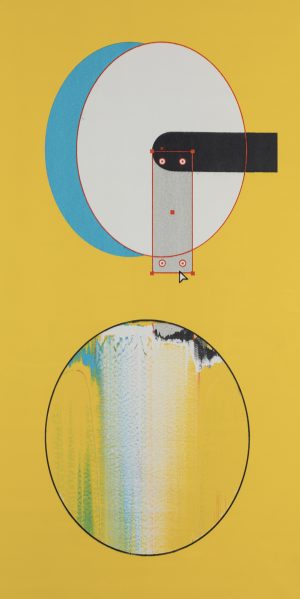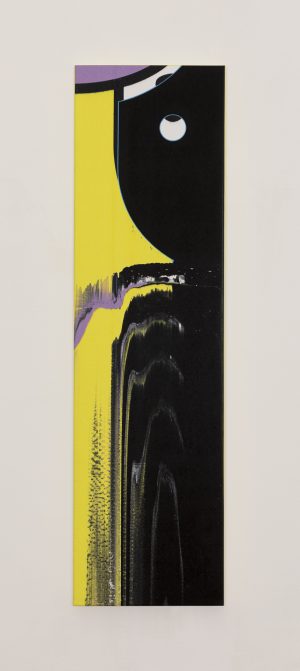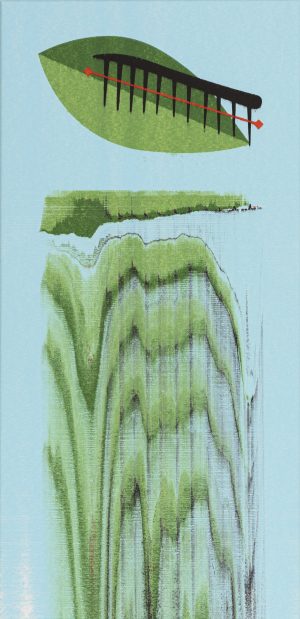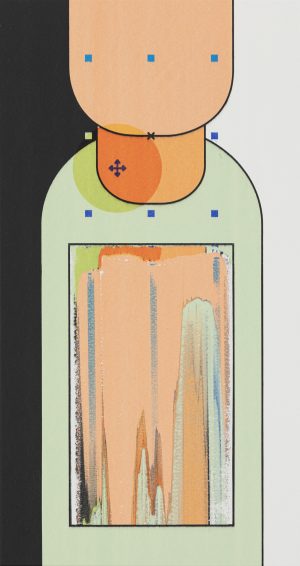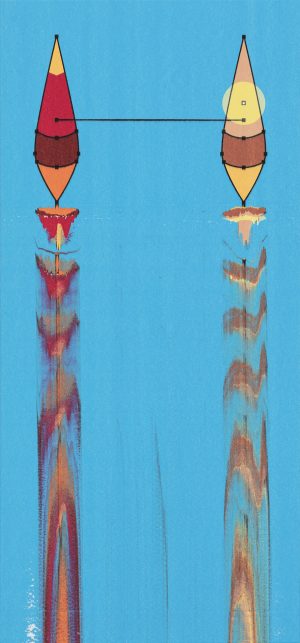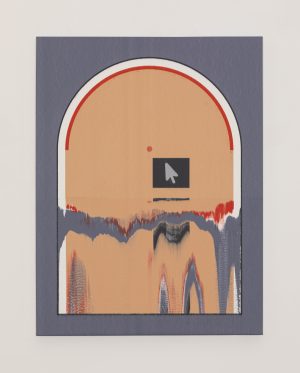
Róbert BATYKÓ
Clickbait
- Year(s)
- 2022
- Technique
- oil on canvas
- Size
- 115x56 cm
Artist's introduction
Róbert Batykó is one of the most distinctive and best-known representatives of the generation of artists starting out in the mid-2000s, who has built a consistent oeuvre of pop motifs, digital references and alienated image surfaces. The language of his works is, as Áron Fenyvesi has noted, defined by “the visual culture created by the advertising industry, mass culture and design with the help of digital image editors and drawing programs”. Batykó graduated from the Hungarian University of Fine Arts in 2005. The earliest source of inspiration for his painting, which schematized the realistic landscape into emblematic motifs and strikingly textured surfaces, was graffiti. He brought his affinity with him from his hometown of Miskolc. His early images of graffiti have been replaced by the distinctive silhouettes of corporate logos, musical instruments and machinery. He filled in the sharply defined forms created by masking (stenciling) with paint surfaces of various textures, often using a coarse brush to scrub the surface in order to eliminate brushstrokes. During a stay in the Netherlands around 2012, he switched from “object portraits” to decorative assemblages of street waste – floating close to abstraction – and then transposed the characteristic elements of the tailgates of truck bodies into his geometric compositions. In another series, launched in the mid-2010s, he painted large-scale images of smoothed and scanned packaging materials, scraping the surfaces to give them a worn effect. The mass of paint was wiped back, “planed down”, by the studio mechanics he had built, the sharp steel-bladed “painting machine”. Dávid Fehér, art historian, pointed out the importance of machine surface treatment: “The pseudo-print effect is crucial as Batykó thereby thematises the subtle differences between printed (reproduced) and painted (individual) images and explores the possibilities of post-technological painting.” In Batykó's paintings made after 2016, computers appear not only in the preliminary design of the compositions, but also as a prominent pictorial motif, from pixels to graphic software symbols to digital image errors. In his latest era, starting around 2018, in addition to computerisation, he is increasingly giving way to chance. The “painting machine”, in the manner of the Surrealists' automatic writing, introduces spontaneity into the creative process, as he spreads the mass of pigment applied to one part of the canvas with a sharp blade, like a ghostly memory stain on the other. The hybrid visual reality, duplicated with ghostly impressions of “error fields”, features motifs familiar from previous eras, such as packaging of consumer products, digital editorial windows or metaphorical lettering similar to company logos. Batykó, who regularly exhibits in Hungary and Western Europe and has won many prestigious awards now lives in Budapest, although he has also spent considerable time in the Netherlands and Germany during the 2010s. Gábor Rieder
More artworks in the artist's collection »



